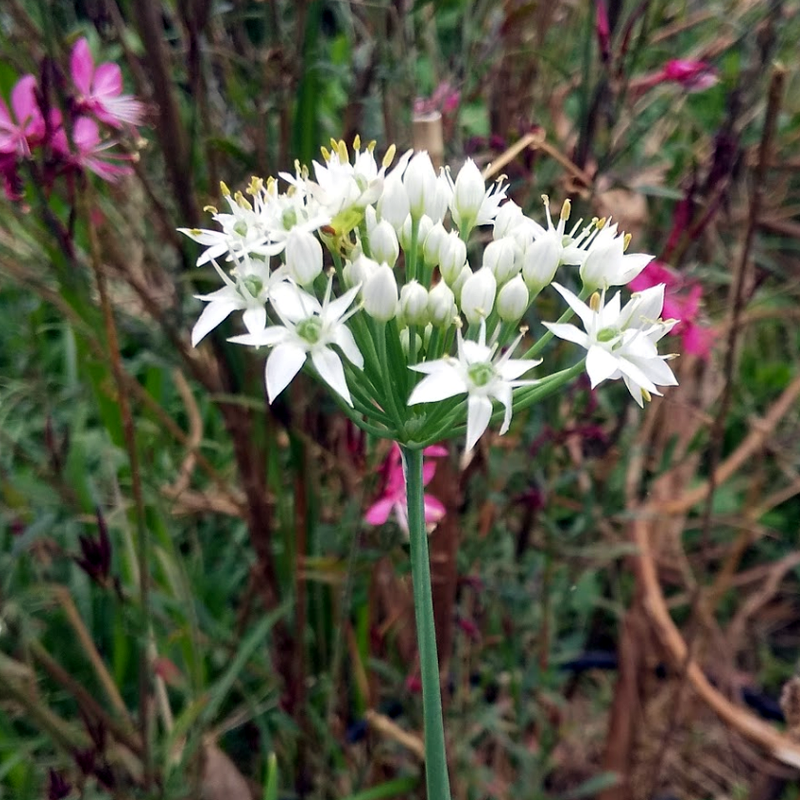
I recently realized the difference between the katakana word “ハナニラ” and the kanji word “花ニラ,” which represents the character “花” (flower). “ハナニラ” refers to an ornamental plant, while “花ニラ” is an edible plant, and they are entirely different varieties.
“ニラ” (Chinese chives) is primarily used for its leaves, which have a distinct aroma that enhances various dishes such as stir-fries, hot pots, and dumpling fillings. In terms of nutrition, it is a rich source of carotene, vitamin B2, vitamin C, potassium, calcium, and other nutrients. During late summer to autumn, “ニラ” produces white six-petaled flowers in clusters of 30 to 50 on elongated, flat stems that emerge from between its leaves, forming a semi-spherical shape. This is what we refer to as “花ニラ,” and it is also used for culinary purposes.
On the other hand, “ハナニラ” produces star-shaped flowers at the tip of a single stem. Its leaves resemble those of “ニラ,” and they share a garlic-like aroma, making them look very similar. However, it’s important to note that the leaves of “ハナニラ” are toxic, and occasionally, people mistakenly consume them, leading to poisoning incidents.
Another distinction is that “花ニラ” blooms during this season, while “ハナニラ” blooms in the early spring, allowing you to differentiate them in this aspect as well.
カタカナの「ハナニラ」とハナが漢字である「花ニラ」の違いに最近まで気付きませんでした。「ハナニラ」は観賞用植物で「花ニラ」は食用植物で全く別の品種なんですね。
ニラ(韮)は主に葉を食用にし、独特の香りが料理を引き立て、炒め物や鍋物、餃子の具などに使われる野菜です。栄養面でも、カロテン、ビタミンB2、ビタミンC、カリウム、カルシウムなどを含む栄養豊富な植物です。このニラが、晩夏から秋にかけて、細長く平らな葉の間から伸びた花茎の先に、白い6弁花が30~50輪、半球形になって花を咲かせます。これが「花ニラ」です。「花ニラ」ももちろん食用に供します。
一方、「ハナニラ」は1本の茎の頂点に星形の花を一つだけ咲かせます。葉はニラとよく似ていて、香りもニンニクの香りがし、そっくりです。しかし、「ハナニラ」の葉は有毒で、ニラの葉と間違えて食べ、中毒を起こす人が時々います。
「花ニラ」はこの時期に花が咲きますが、「ハナニラ」は春先に花が咲き、この点でも区別できます。
